Landscape
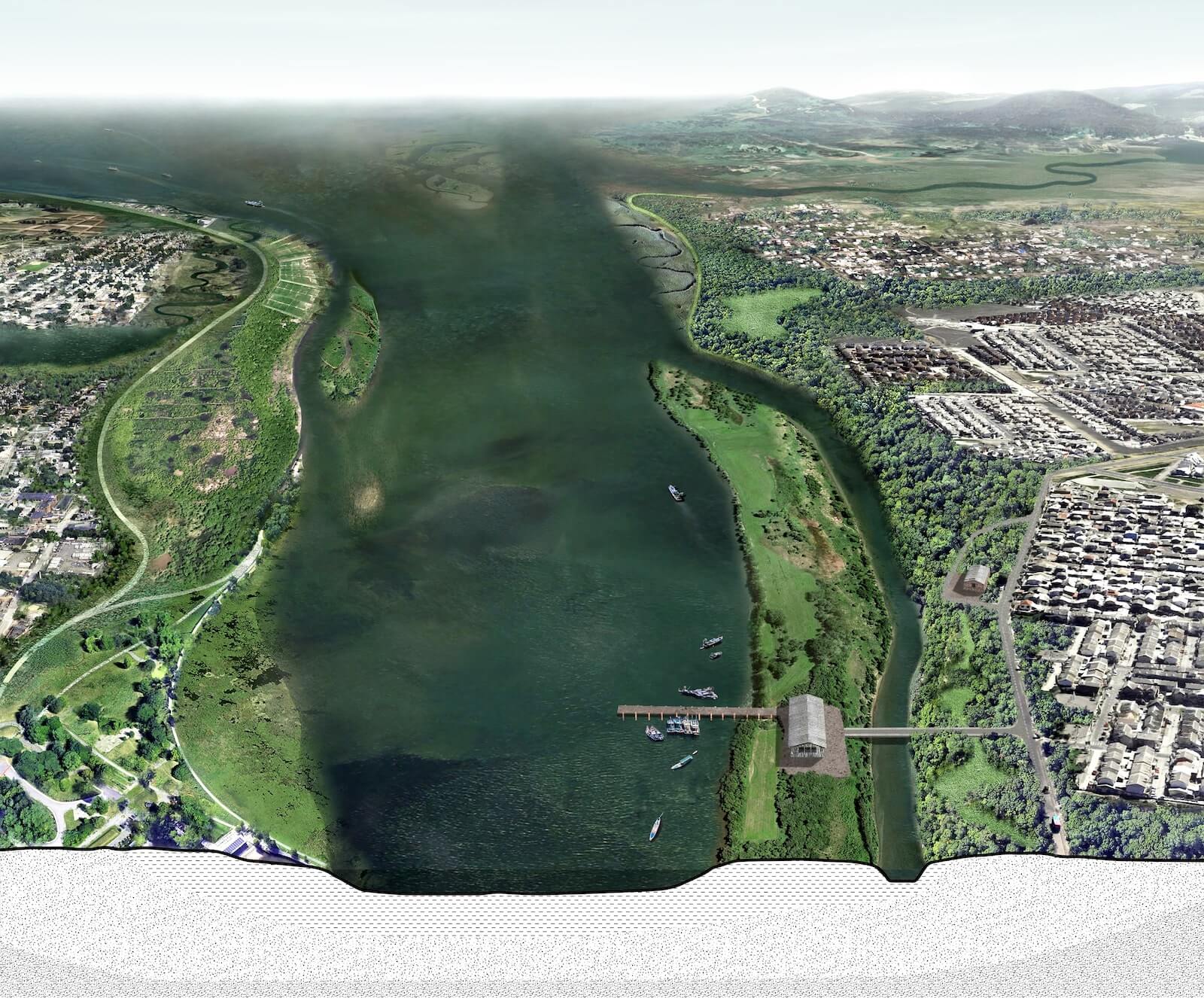
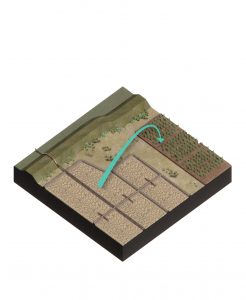
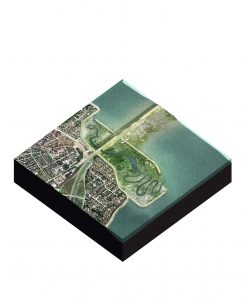
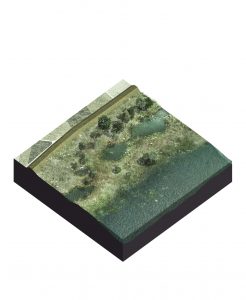
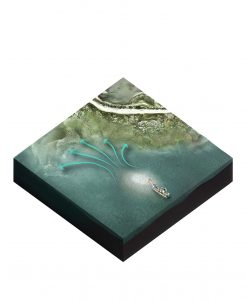
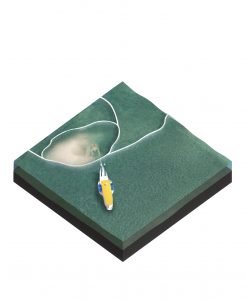
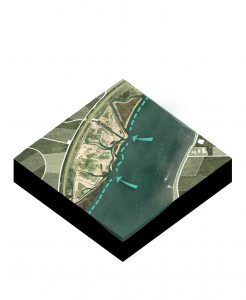
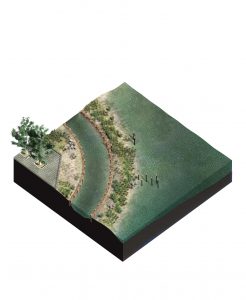
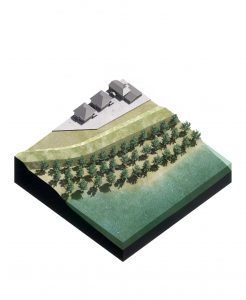
The fertile land along rivers and estuaries has sustained human settlement since the earliest civilizations. These waterways and water bodies provide important access for transportation and trade. Rivers originate from groundwater sources, excess precipitation, and snow melt and convey not only sediment, nutrients, and seeds, but also pollutants and waste. Processes of erosion and sedimentation give shape to alluvial rivers and estuaries and support ecosystem continuums that are connected and continuously evolving. Estuaries are brackish tidal environments that comprise the transitional zone between fresh river waters and salty oceans and seas. Constantly in flux, these landscapes are biologically potent because of the interplay of salt and freshwater flows; their gradients yield high biodiversity.
Rivers and estuaries today have often suppressed natural dynamics. Rivers have been confined and estuarine areas have been reclaimed; the transition from water to land has been fixed. Experience demonstrates that hard engineering interventions in rivers and estuaries provide short-term local solutions and human benefits, but often lead to later problems upstream or downstream. Building with Nature aims to optimize the human benefits of intervention while using the fluvial and estuarine system sustainably. River training can be reconsidered and aimed at restoring river corridors by reestablishing connectivity and creating space for flooding. Foreshores and salt marshes address similar issues in estuaries. Expanded natural space enhances local and regional recreational opportunities while improving riverine and estuarine ecosystems. Fish migrate and spawn once again and the landscape provides habitat for birds and other species.
Ecological Benefits
Rivers and estuaries are connected and productive environments with numerous habitat types. Habitats vary due to temporal and physical differences in water depth, flow velocity, and inundation frequency, as well as biological factors. Dynamics and gradients in nutrient concentration, sediment load, temperature, and salinity sustain diverse ecosystems. Structural interventions influence sediment and morphological characteristics, altering the river corridor ecosystem. In the upper reaches of river deltas, basin ecology determines the residence time of precipitation water before it enters river branches, whereas in lower reaches, tidal rivers facilitate the transition from fluvial to estuarine environments, with freshwater giving way to brackish.
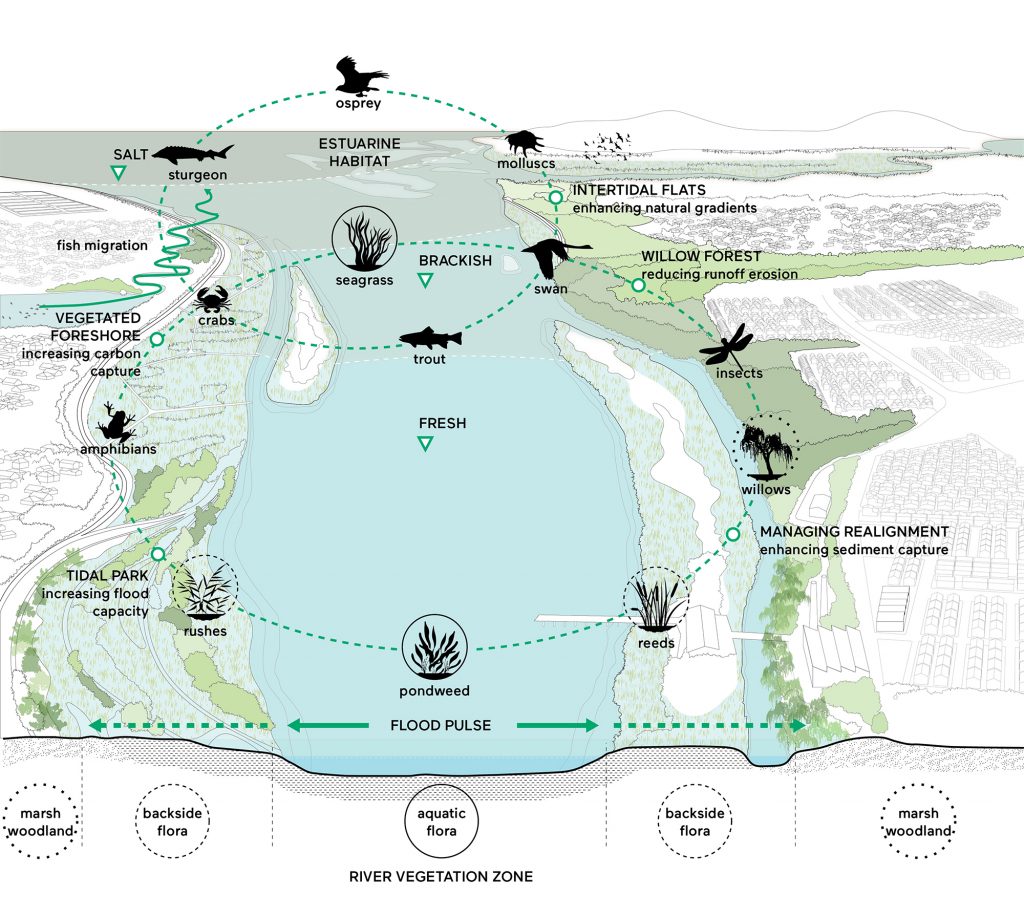
Places to live, work and visit
Some of humankind’s earliest civilizations formed on the banks of rivers and edges of estuaries. The fertile lands enabled agricultural production while the bodies of water gave access to fisheries. Over time, rivers provided an important means of transportation and formed natural boundaries for military defense and jurisdictional delineation. Waterways enabled early trade and are indeed the origin of globalization. During the Industrial Revolution, mills and factories harnessed water flow to generate power for their operations. Many cultures ascribe spiritual value to rivers and take aesthetic and cultural inspiration from their coursing waters, making rivers the backbone of both cultural heritage and modern urban identity. Economic development and spatial planning practices today shape rivers and estuaries, and their floodplains. These waterbodies may create challenges in the form of floods, waste accumulation, odors, and disease. Yet they also bring significant benefits through biodiversity, recreational amenity, and opportunities for trade and business.
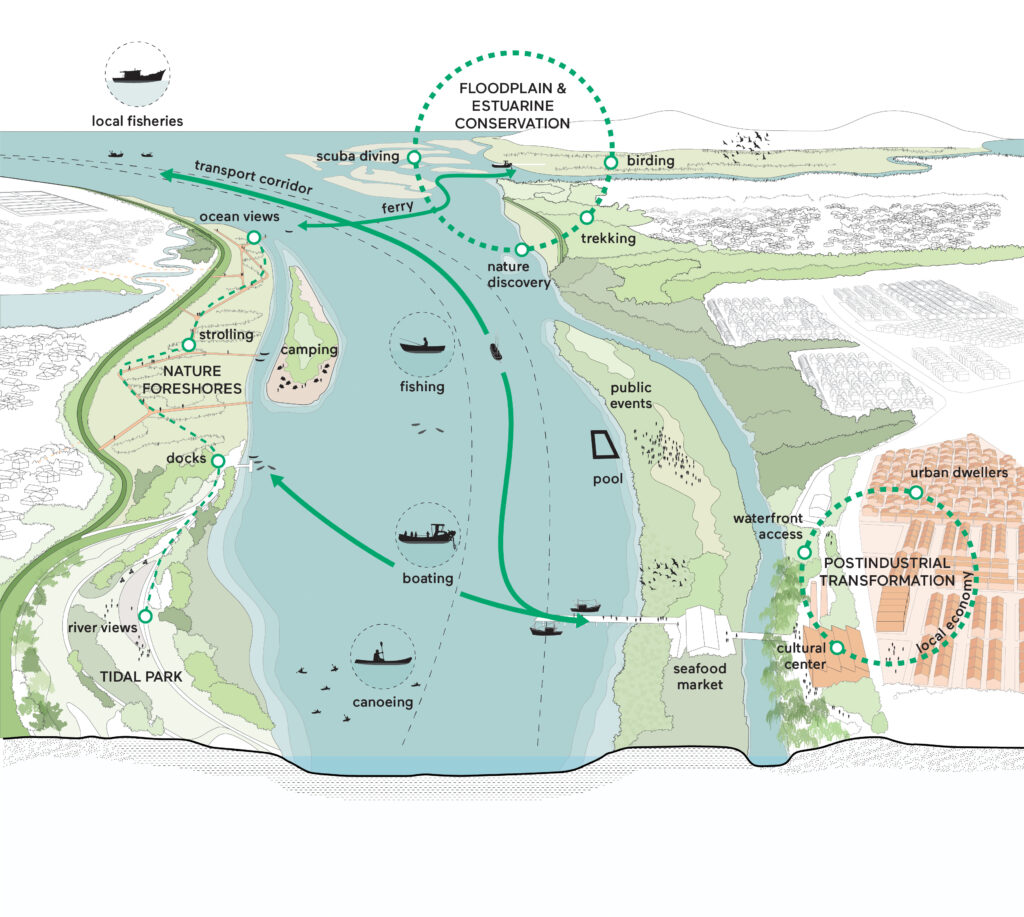
Resource Flows
The fundamental characteristic of rivers is the continuous movement of water, which flows due to gravitational forces. This movement is sometimes hastened with embankments or dikes and slowed only by the friction that vegetation, hard structures, and the riverbed itself exert. In concept, the interplay between water, sediment, and vegetation determines the shape of the river and its evolving form and floodplain. In practice, human interventions such as dikes and dams together with climate change and subsidence determine the shape of watercourses today and in the future. In estuaries, fresh and saltwater flows are subject to tidal influences, which cause turbulent conditions and horizontal fresh-salt gradients. Estuaries respond and adapt to changes in salinity and inundation as water levels rise and fall, and during seasonal cycles and flood events. Intervention in these landscapes requires a thorough understanding of systems and sediment management to provide both human and natural benefits.
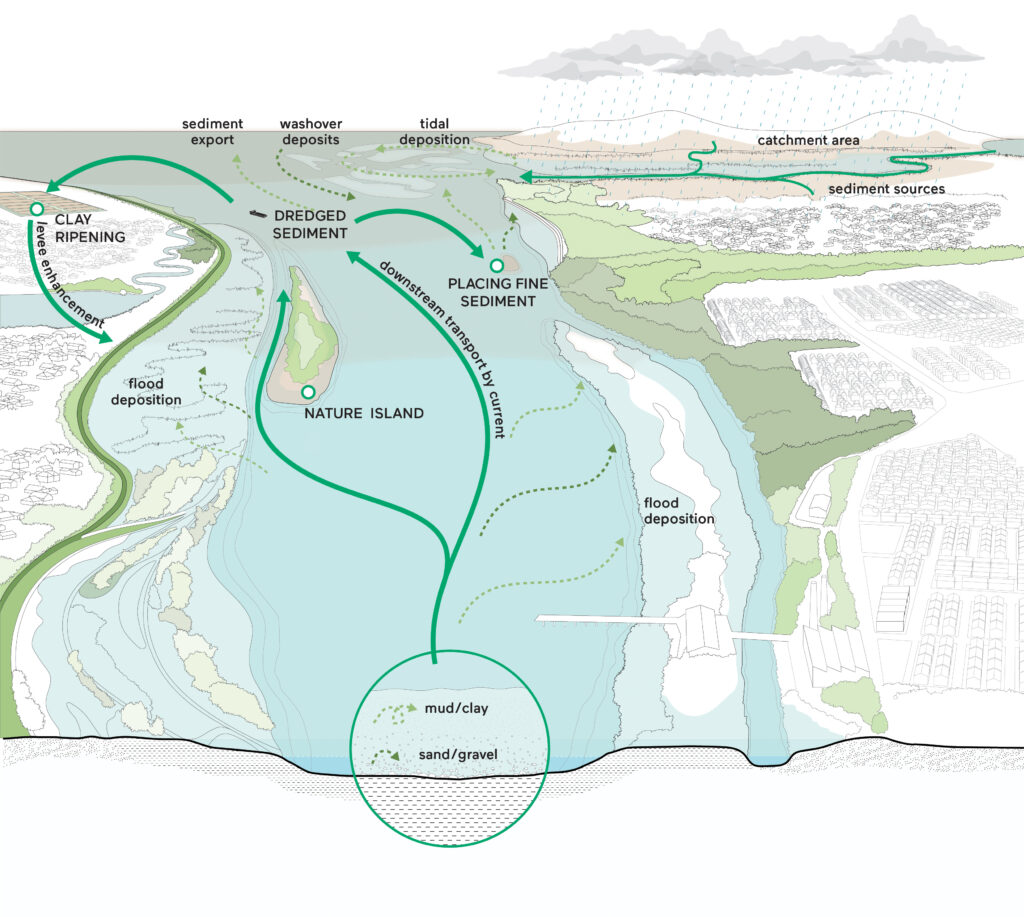
Integrated Approach
Rivers and estuaries not only express the conditions of their immediate location, but also their catchment areas and interactions with the coast. Most major rivers around the world have been altered along their course, and are no longer free-flowing. Any project today must rely on analyses of spatial and timescale impacts related to landscape intervention and start from a critical understanding of the interaction between natural systems and the applied Building with Nature technology. Some elements of this interaction include sediment transport, morphological processes, salinity flows, extreme events and their effects (flood, rain, drought), as well as native and functional plant species, and underlying ecologies. Building with Nature fundamentally differs from traditional hydraulic infrastructure as it focuses on larger-scale approaches while addressing specific features. A combination of observation, analysis, and predictive quantitative modeling is crucial to grasp the multi-dimensional reality of any environment; this process calls for experts from diverse backgrounds. The evolution of the Dutch river management approach reflects this need: it has moved away from traditional engineering approaches, via Room for the River, and toward further integrating river management into practice. While project objectives may differ, they aim to balance all functions of the river system, including the ecosystem by restoring natural processes and mitigating damage inflicted by past land use, the structural modification of waterways, and sediment mining activities.
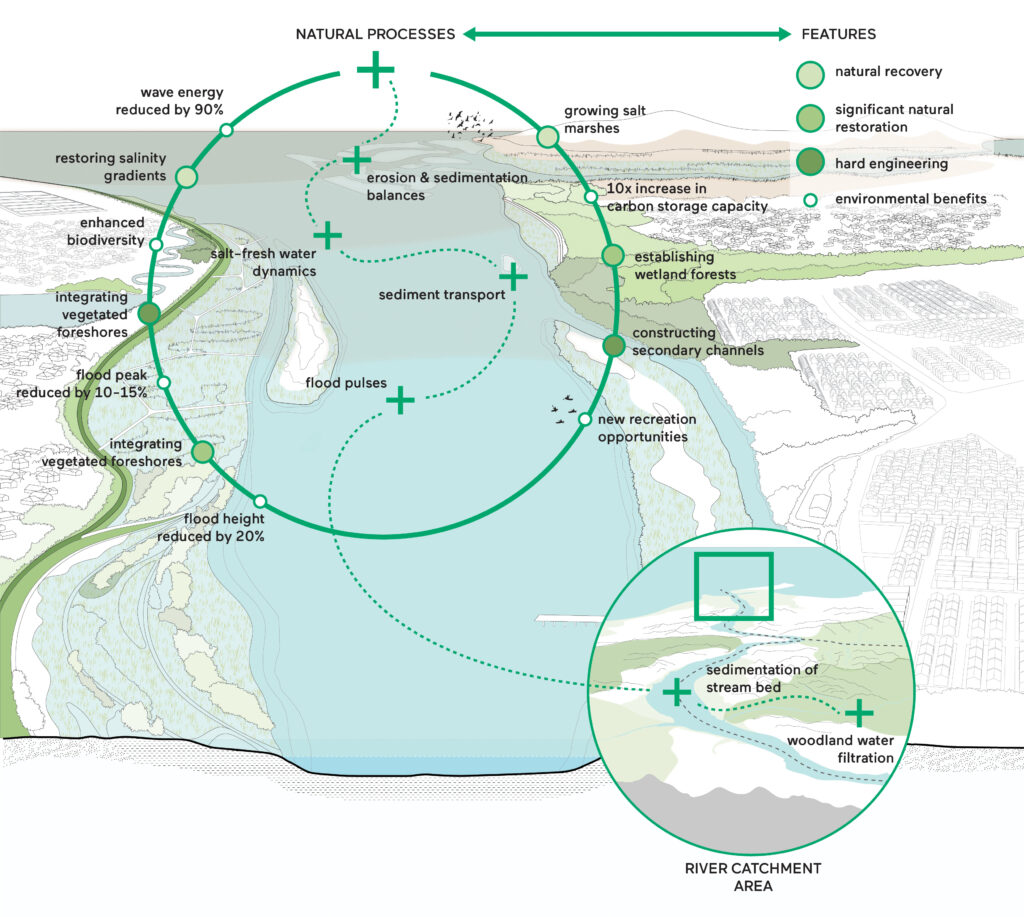
The Details
Get more insight in the driving physical and natural processes that shape rivers and estuaries, and all the benefits these landscapes create by visiting our in-depth landscape description of rivers and estuaries.
